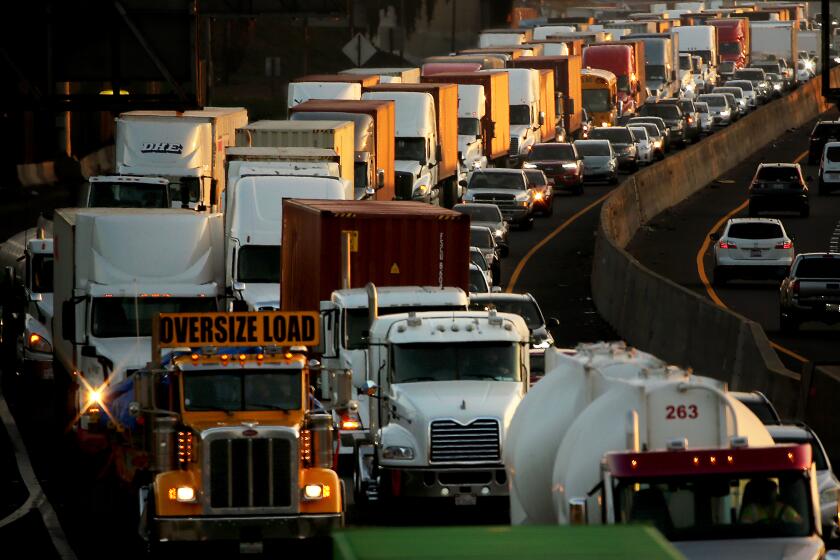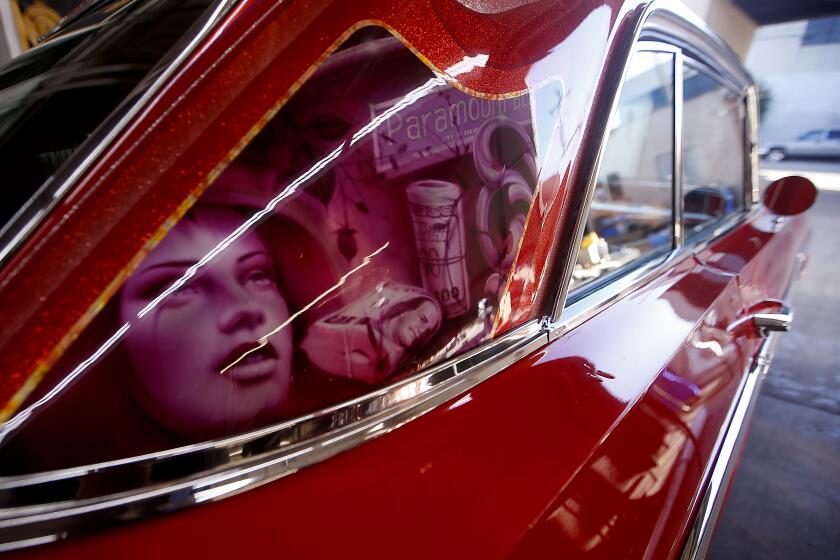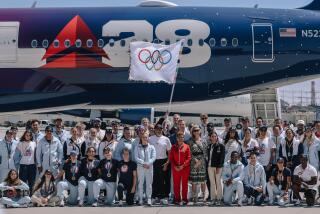Column: In Newport Beach, an old ferry company navigates choppy waters toward zero emissions
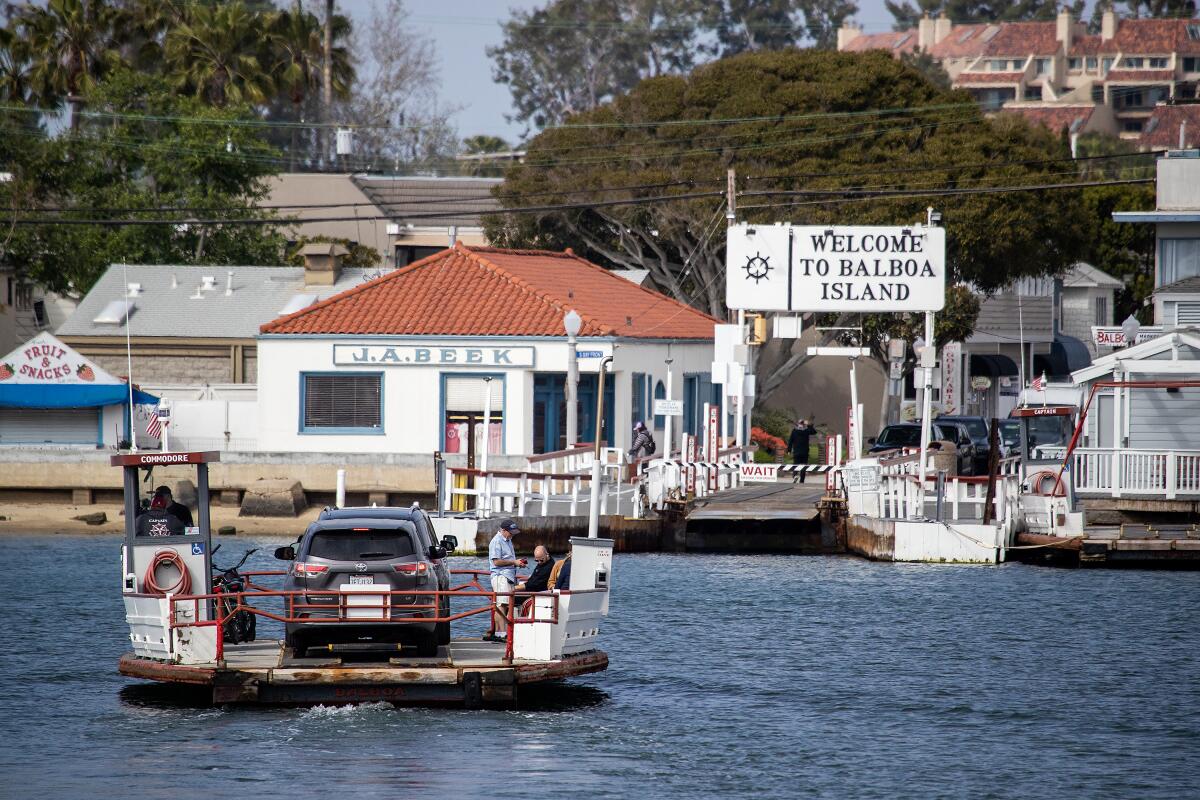
It was a bright, breezy day in Balboa Island as I saw the Admiral, Commodore, and Captain do their thing.
They’re the three spartan boats that make up the fleet of the Balboa Island Ferry, Newport Beach’s oldest business. Operated by the Beek family for 104 years, the trio take passengers and cars between Balboa Island and the Balboa Peninsula on a trip that’s all of 800 feet and takes about 2½ minutes but is as beloved an O.C. tradition as a day at Disneyland or making fun of Huntington Beach.
More than 1.5 million people and 300,000 automobiles use the Balboa ferries every year. On the afternoon I went, however, they were mostly empty. Spring break was over, and Memorial Day was weeks away.
“The calm before the storm,” joked operations manager Nate Capra. But a typhoon of tourists wasn’t the only incoming problem on his mind.
In December, the California Air Resources Board — the agency in charge of regulating air pollution in the state, known as CARB for short — voted to mandate that new tugboats, barges, supply ships and ferries must use lower-emission engines. Existing watercraft of those types have up to five years to switch out their older engines and can apply for extensions to delay any changes for up to a decade.
Unless you’re the Balboa Island Ferry, that is.
In a marathon two-day hearing, the California Air Resources Board voted on new regulations designed to limit pollution from locomotives and cargo trucks.
They’re classified as short-run ferries— boats that regularly go between two points less than three nautical miles apart. There are only 16 such operations in California, and although the Air Resources Board says they make up only 2% of all the harbor craft affected by new regulations, they account for 15% of the emissions that CARB seeks to curb from that class of seafaring ships.
That’s why the Air Resources Board ruled that short-run ferries have only until the end of 2025 to convert to zero-emission engines, even though there’s all of one such ferry right now in California to prove zero-emission short-run ferries can even be dependable.
This regulatory hammer to what amounts to minnows in California’s sea of pollution has Balboa residents and tourists angry — even the eco-minded.
The first ferry docked, and Dana Vázquez of Huntington Beach and her husband, Jeff Moss, got off with their electric bicycles. They left the electric car back home. “[The state] can’t just tell them to do something and not help them fund it,” she said.
I hopped onto the next ferry toward the peninsula and chatted with Balboa Island residents Roger Barakat and Karla Vandenberg. “Not everything will work better with electricity,” Barakat said as Vandenberg took out her cellphone to record the short trip. “These are just fine the way they are.”
“It makes our day bright, and it makes us accessible to the ocean,” Vandenberg said. She then looked at Capra. “There’s enough people on the island to support the ferry” and pay for any upgrade costs, Vandenberg promised him.
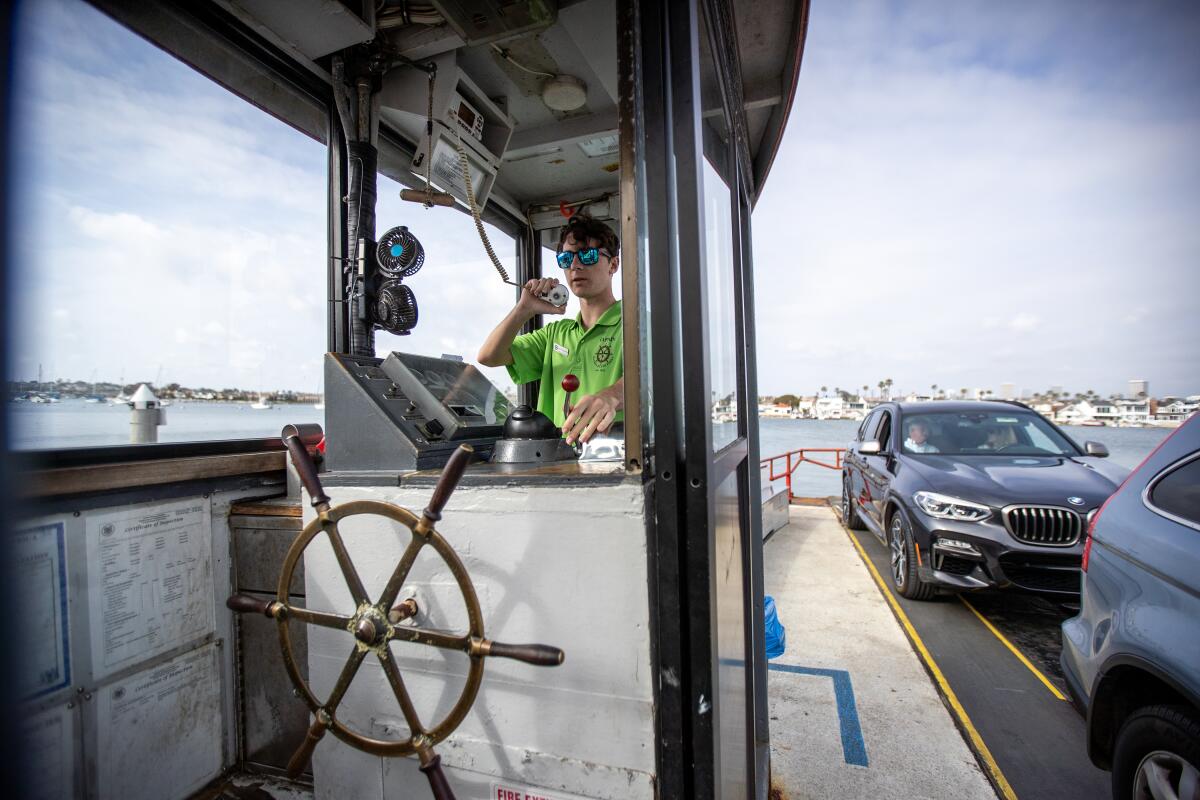
When I returned to Balboa Island, Seymour Beek was waiting at the dock to talk to me. His father took over the ferry in 1919 from someone else but made his riches by helping to develop Balboa Island. Today, Beek and his family run it out of a sense of noblesse oblige.
“If we sold it, it’s not going to make anyone rich,” Beek said with a soft chuckle. Wearing a crisply ironed button-down shirt, sunglasses, baseball cap and boat shoes, the 89-year-old looked every bit a kind boat baron. He has headed the corporation that owns the ferry since he retired as an aerospace engineer in 1990.
Fifteen years ago, the Air Resources Board forced short-run ferries to install what are known as Tier 2 engines, which have more stringent exhaust standards than previous models. Beek had no problem with that rule, or any clean-air rule, really. He said his mechanics could put a Tier 3 engine into their boats “in a day” and a Tier 4 model in a couple of weeks.
But fully zero-emission?
”I understand the motive, and I want clean air,” Beek said. “It’s just not feasible from a technical standpoint.”
He had his mechanics and crew study switching over to an all-electric fleet. “The weight of the batteries and motor alone require new stability for all the boats. We can’t even package” the current generation of batteries into the hull — and they need time to cool down after extended use. The ferry’s docks would require chargers, which means an upgrade to the electrical grid.
Total cost as of now: $5 million. A Tier 3 engine, on the other hand, costs $30,000.
Beek looked at the yachts around us, mega- and not. California isn’t requiring personal sea vessels to upgrade their engines.
We stood in front of a black Impala to admire the metal trim that spanned the length of the car’s side. One part was chromed, the other stainless steel. Which was which?
“We’re one of thousands of boats in the harbor, and we burn way cleaner,” Beek said. “I think they [the Air Resources Board] saw short-run ferries as a category they could easily make a rule on.”
He’s enlisted the help of former Newport Beach mayor and current Assemblymember Diane Dixon to see if the Air Resources Board could give him an extension. She’s also not wholly opposed to having the Balboa ferries go zero-emission.
“I have confidence that technology will catch up — that’s the marketplace,” Dixon said. “But to impose draconian regulations with artificial deadlines, I think that’s problematic.”
Dixon said she’s “not trying to make enemies with” the Air Resources Board. But the assembly member feels that what they’re doing to businesses like Beek’s is “an example writ large for small businesses of what’s happening in California.”
That’s a Republican talking point … but it’s also true.
In a previous column, I wrote about how the Air Resources Board is considering a total ban by 2039 on hexavalent chromium, the toxic chemical compound that gives chrome its distinctive shine. Car detailers, however, would have to quit using it by 2027, even though chroming cars accounts for 0.4% of all hexavalent chromium emissions in the state.
Meanwhile, far-worse polluters such as vehicle exhaust and heavy industry get a longer time to adjust.
In a county where locals call themselves grizzled pioneers if their residency predates Disneyland, the Beek family is something of a marvel.
I called up Hector De La Torre, the former assembly member from southeast L.A. who’s now the Air Resources Board’s second-longest-serving member, so I could understand why CARB takes this approach. He’s spoken with Beek and is confident the agency can help the Balboa ferries electrify through grants.
“We cannot incentivize compliance, but we can incentivize early adopters,” De La Torre said. “And it’s easy for us to incentivize if the owners are willing to come and ask,” mentioning a hydrogen-cell-powered ferry in San Francisco that launched earlier this year and is the first of its kind in the United States.
He claimed that the limited trips of short-run ferries and their lighter loads make them easier to switch over than bigger boats. And De La Torre pushed back against Beek’s claim that the Air Resources Board is picking on him and his ilk because there are so few of them.
“This issue of a specific sector saying, ‘Oh, we’re only a small part, you shouldn’t focus on us first’ — that happens in everything we do,” the board member said. “If I had a dollar for ever sector that came saying, ‘You should exempt us,’ I’d be a rich man. But we can’t. All of these emissions impact us.
“People who live on that very nice island of Balboa are breathing this [exhaust],” he continued. “We don’t want it in South Gate, they don’t want it in Newport. We don’t want to play favorites.”
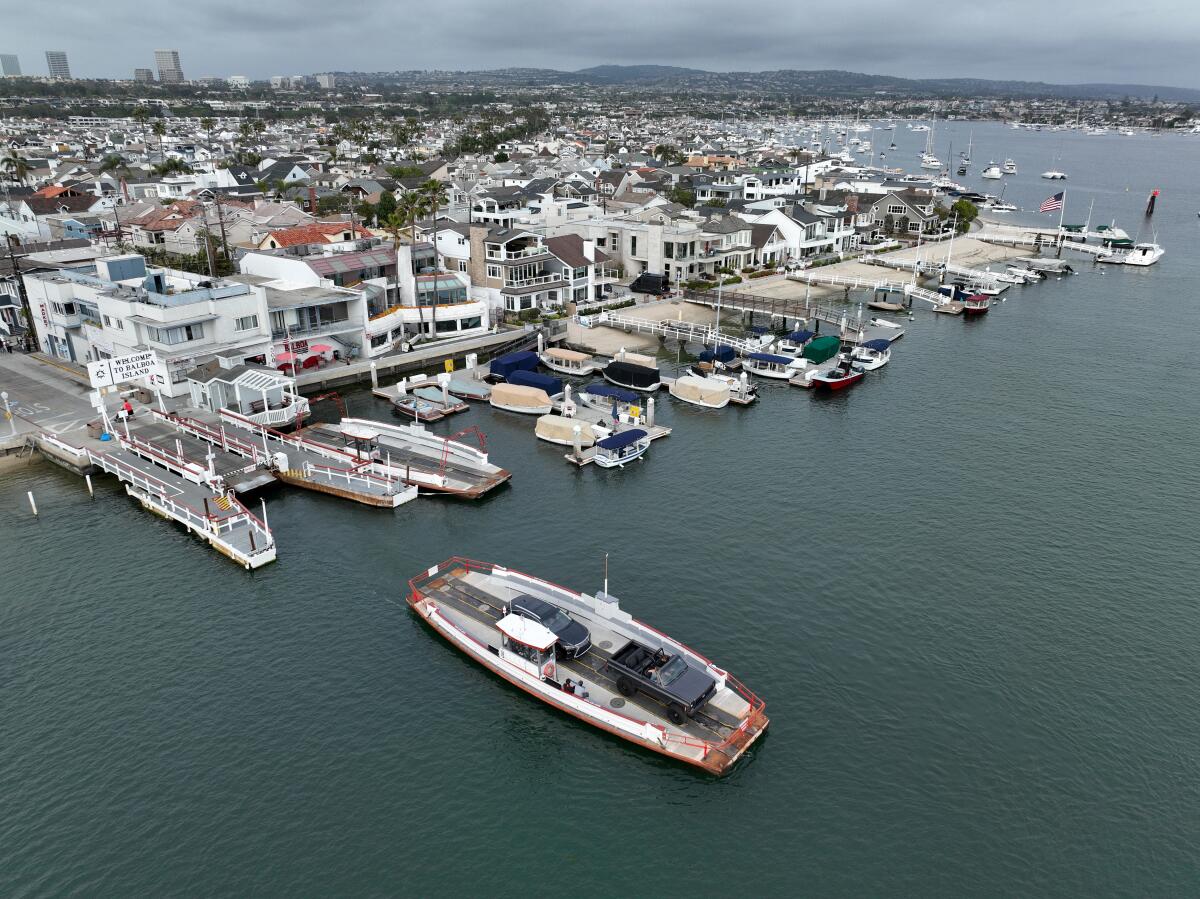
A couple of days after I met Beek and talked to De La Torre, I returned to the Balboa Island Ferry to cross over with my Yukon. If I had taken the same trip overland, it would’ve taken me at least 15 minutes without traffic. A worker handed out slips of paper that read “Save the ferry!” in all caps, along with a QR code that took me to their Instagram page.
The ferry is in no danger of disappearing, I thought, as the Commander took me across the water. Some Newport Beach yacht millionaire could dig through the seats of their Maybach and give Beek the money to electrify tomorrow.
But the point remains: Why does a mom-and-pop business like Beek’s need to be a guinea pig in California’s push to become a clean-air paradise?
More to Read
Sign up for Essential California
The most important California stories and recommendations in your inbox every morning.
You may occasionally receive promotional content from the Los Angeles Times.
